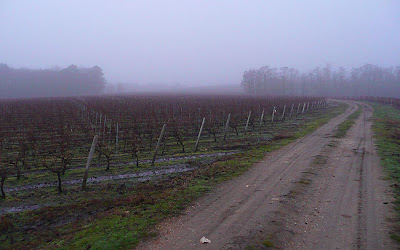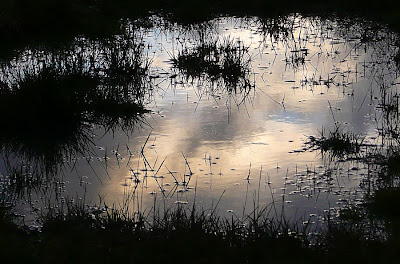Adapting and converting French recipes into American measures and methods is not straightforward. The same is true in the opposite direction, American to French. American recipes give amounts for most ingredients by volume — a cup of this and a half cup of that — while French recipes specify non-liquid quantities by weight. I don't normally do all these conversions for my cooking at home.
By the way, with all the recipes available on the Internet these days, one thing Americans, Australians, and British cooks need to realize is that a cup is not always a cup. A pint is not always the pint you think it is.
 Weighing ¾ cup (U.S.) of sugar
Weighing ¾ cup (U.S.) of sugar...
Specifically, a British cup is 10 fluid ounces, and a British pint is 20 oz. An American cup is 8 fluid ounces, and an American pint is 16 oz. ("American" here means "North American", including English-speaking Canada.) Cups, pints, quarts, and gallons, then, are 20% larger in the British (a.k.a. Imperial) system, compared to American measures. That can make a huge difference, especially in baking.
 ...and ¾ cup + 2 Tbsp. of cocoa
...and ¾ cup + 2 Tbsp. of cocoaIn the French system, weights are specified in milligrams, grams, and kilograms. When I say "the French system" I'm not talking about the whole francophone world, however. In Québec, quantities that in France would be given as weights are often specified by volume — but in milliliters or decilitres, not cups and fluid ounces. I saw a French cooking show about Québec a few days ago, and the French host was surprised that amounts of flour were given in milliliters, not grams.
About the only way to prepare many French recipes is to use a kitchen scale. Once you get used to weighing everything, it all starts to make a lot of sense. For American recipes, you need a set of measuring cups — a cup, ¾ cup, ½ cup, ¼ cup, and so on — and spoons — 1 tablespoon, 1 teaspoon, ½ teaspoon, etc. In France, these are not easy to find. When a French recipe calls for a teaspoon —
une cuillère à café — of an ingredient, it doesn't mean that you need to get out the measuring spoons. You just use a regular teaspoon.
 Brownies are good with chopped walnuts or pecans in them.
Brownies are good with chopped walnuts or pecans in them.About the only way to convert American recipes into French terms is to measure out the ingredients in American measuring cups and then weigh the result. That's what I did to translate this recipe for
brownies made with cocoa powder, which I found on
www.epicurious.com. I've been making it for a couple of years now.
I measured out, for example, 1¼ cups of granulated sugar (
sucre en poudre, in French) and then weighed that quantity on a kitchen scale. I did the same for ½ cup of all-purpose flour (
farine ménagère) and ¾ cup + 2 Tbsp. — yes, that's the quantity the recipe calls for — of unsweetened cocoa powder (
cacao non sucré). I also rounded off the quantities slightly. There's no point in specifying 96 grams of cocoa, for example. Most kitchen scales are not that sensitive.
 Best Cocoa Brownies
Best Cocoa BrowniesHere are the quantities I came up for the recipe:
Best Cocoa Brownies
150 g unsalted butter
280 g sugar
100 g unsweetened cocoa powder
a pinch of salt
½ teaspoon powdered vanilla or sucre vanillé
2 cold, large eggs
75 g all-purpose flour
50 to 75 g walnut or pecan pieces (optional)
(Go to the Epicurious web page for the instructions...)
In going through the recipe this way and comparing it to French recipes for brownies that I found on the web, I noticed two things. This recipe has a lot more sugar in it than most of the French recipes do. That's typical. American baked goods are a lot sweeter, overall, than French
pâtisseries.
The American recipe also calls for just 2 eggs, whereas most of the French recipes I found call for 3 or even 4 eggs. I'm not sure why there is that difference. Are American eggs larger? I wouldn't be surprised. Or maybe French cooks like eggier cakes. I used just two (French) eggs and I think the result is fine.
One ingredient in the brownie recipe that might be a problem for a French cook is liquid vanilla extract. I can't find that here in Saint-Aignan. You can, however, find what is called
sucre vanillé. That's sugar flavored with vanilla, and it's sold in little packets like the sugar packets you get in American restaurants. You could substitute one of those for the liquid vanilla.
At the supermarket in France, you can also buy vanilla powder — the tiny jar I have is called «
vanille poudre sucrée ». That's another good substitute for liquid vanilla. You can also buy little vials of vanilla-flavored caramel syrup, and fresh vanilla beans, of course. Some of the French recipes for brownies say to flavor them with rum instead of vanilla.
 Cocoa, both SuperU brand and Van Houten's
Cocoa, both SuperU brand and Van Houten'sFinding powdered cocoa —
cacao non sucré — is not a problem, as you can see from the picture. There's a name brand, Van Houten, and there's also a store brand at SuperU. I'm not sure why I started making brownies with cocoa rather than baker's chocolate. I'm not much of a "choco-holic"in fact. In reading about brownies, I learned that there are two kinds of cocoa, natural and Dutch-process. That's another complication...
By the way, the brownies are delicious. Sweet,
moelleux (tender), and chocolatey.
Here are some French recipes for brownies from Marmiton and a couple of other sites:
Brownies au chocolat avec 4 oeufsBrownies au cacao avec 4 oeufs
Brownies avec 2 oeufsBrownies avec 3 oeufsBrownies avec 4 oeufs
 Here's another panorama showing the view from the south (looking north) in 2006. You can see the ruins of the medieval fortress, the Renaissance château, and the towers of the church. Again, click on the picture to see it full-size.
Here's another panorama showing the view from the south (looking north) in 2006. You can see the ruins of the medieval fortress, the Renaissance château, and the towers of the church. Again, click on the picture to see it full-size.
 You can see how green it is, and the snow was not sticking. It was very cold this morning, however: -5ºC (+23ºF). The sun is now shining brightly.
You can see how green it is, and the snow was not sticking. It was very cold this morning, however: -5ºC (+23ºF). The sun is now shining brightly.


















































